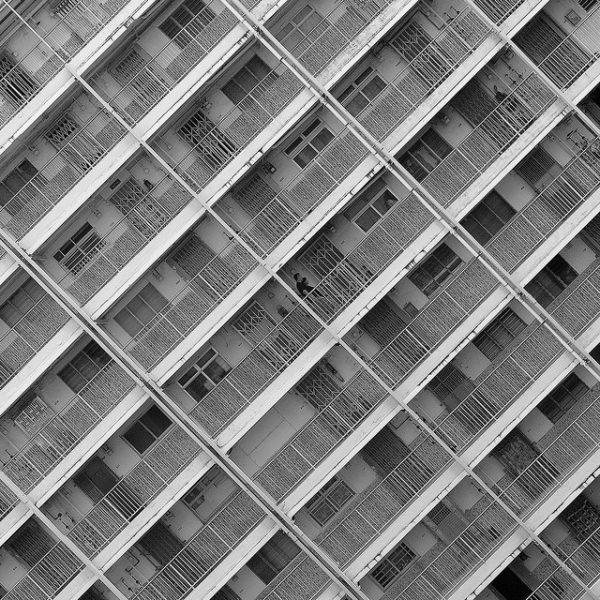
Public housing has a long and troubled history in the United States. In recent years, the demolishing of public housing in cities like Chicago has been one of the most prominent images of decline. For sociologists, it is important to understand not just the problems with and eventual failures of post-war public housing, but also the social forces and sentiments behind their creation.
Consider why the federal government would even see a role for itself in the building of public housing structures in the first place. The origin of public housing legislation can be traced back to Franklin Roosevelt’s New Deal, a series of laws and executive orders focused on providing more basic necessities for the poorest in America.
- Edward Goetz. 2013. New Deal Ruins: Race, Economic Justice, and Public Housing Policy. Cornell University Press.
- John F. Bauman, Roger Biles, and Kristin M. Szylvian. 2000. From Tenements to the Taylor Homes: In Search of an Urban Housing Policy in Twentieth-Century America. Penn State Press.
- Nicholas Dagen Bloom. 2009. Public Housing That Worked: New York in the Twentieth Century. University of Pennsylvania Press.
- Richard Allen Hays. 1995. The Federal Government and Urban Housing. SUNY Press.
However, public housing would eventually become associated with racial segregation. The design of public housing projects ultimately worked to concentrate poor non-white communities into relatively cut-off neighborhoods in the middle of cities. This segregation, combined with heavy degradation of the buildings and a lack of proper care from government officials, led to a heavily stigmatized view of public housing buildings.
- Douglas Massey and Adam Bickford. 1991. “Segregation in the Second Ghetto: Racial and Ethnic Segregation in American Public Housing, 1977.” Social Forces. 69(4): 1011-1036.
- Douglas Massey and Nancy Denton. 1993. American Apartheid: Segregation and the Making of the Underclass. Harvard University Press.
- Steven R. Holloway, Deborah Bryan, Robert Chabot, Donna M. Rogers, and James Rulli. 1998. “Exploring the Effects of Public Housing on the Concentration of Poverty in Columbus, Ohio.” Urban Affairs Review. 33(6): 767-789.
Given the sheer intensity of racial segregation and concentrated poverty in public housing, many housing advocates and public officials have declared these programs a failure, leading to the demolition of old public housing facilities. But there have also been various proposals to renew public housing initiatives that look to learn from the mistakes of the past while keeping to the goal of housing the poor. One of the largest programs, the federal HOPE VI program, is an ongoing federal project to revitalize public housing areas with architecture focused on crime prevention. This focus on crime prevention is inspired by Oscar Newman’s ‘defensible space’ concept — the idea that if people feel more ownership over a space, they’ll be more watchful over how their neighbors use it, thus curbing crime.
- Edward Goetz. 2011. “Gentrification in Black and White: The Racial Impact of Public Housing Demolition in American Cities.” Urban Studies. 48(8): 1581-1604.
- Edward G. Goetz. 2000. “The Politics of Poverty Deconcentration and Housing Demolition.” Journal of Urban Affairs. 22(2): 157-173.
- Jerry J. Salama. 1999. “The Redevelopment of Distressed Public Housing: Early Results from the HOPE VI Projects in Atlanta, Chicago, and San Antonio.” Housing Policy Debate 10(1): 95-142.
- Oscar Newman. 1972. Defensible Space. New York: Macmillan.

Comments